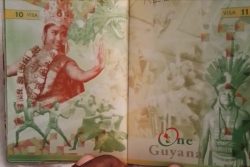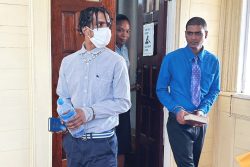By David A. Granger
The descendants of enslaved Africans have lived in Guyana for over three and a half centuries. For the first two centuries, however, they lived in bondage. During the era of enslavement, owing to the violent circumstances of their capture and transport from their homelands, they brought no material goods. Their average lifespan was short – a mere 12 years – owing to overwork and cruelty. According to Alvin Thompson, they were treated as “two-legged domestic animals,” forbidden to own property and to marry. It was difficult to transmit cultural values in such a setting. Not until the approach to Emancipation in 1838 and thereafter were Africans allowed to enjoy the minimum conditions of social life.
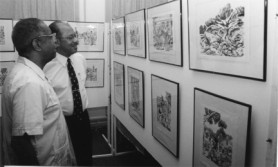
They seized the opportunity of Emancipation to establish the foundations of a civilized life – the quest for education, employment, equality and the pursuit of happiness. They founded over a hundred communities during the Village Movement in the post-Emancipation period. These villages rested securely on four pillars – the home, church, farm and school – that were the wellspring of a distinctive culture.
Culture, defined, at its simplest, as “the design for living which produces a people’s distinctive way of life,” was far from uniform at first owing to the diverse origins of the Africans. What came to be called ‘Creole’ culture eventually evolved as the unintended consequence of the grave economic privation, social subordination and political domination which prevailed at that time. The term ‘Creole’ was used originally to distinguish local-born from foreign-born. It became widely used in Guyana during the 19th century, according to Brian Moore, to refer to persons of African descent who were distinguished from those of all other ethnic groups. Creole culture, therefore, was engendered entirely through the African experience in Guyana. Certain values – cooperative work, love of the land, religious faith, self-reliance and thrift – came to typify their communities at an early stage of development.
The introduction of universal primary education in 1876 impelled the Cultural Movement that sprang from the bosom of the Village Movement. The long struggle for civil and political rights started in the late years of the 19th century and early 20th century. The masses were potent elements in the transformation of a patchwork of plantations into a free and unified nation.
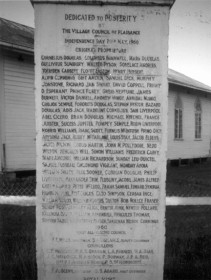
Among the luminaries were Norman Cameron, the educator and writer who founded the British Guiana Literary Society and the British Guiana Union of Cultural Clubs. In later years, Aubrey Williams was to be acclaimed Guyana’s greatest artist; Martin Carter, its greatest poet; Wilson Harris its greatest writer and Helen Taitt, its most accomplished danseuse. Cyril Potter and Valerie Rodway are outstanding composers of our finest national and patriotic songs.
These, along with many persons of other ethnic groups, were members of a gifted generation who contributed to what now is recognised as a national culture. They left behind a considerable corpus of oeuvres and objects.
As an aspect of Creole culture, material culture is a term used to describe the objects which people produced. These objects – materials – include works of art, furniture, monuments, structures, tools and utensils. They refer also to the resources and spaces – including churches, factories, homes, offices, schools, stores, places of entertainment and means of production – that a community creates or uses to define its culture. Objects, as such, are essential sources of information about the past from which historical researchers can learn about a community. Examples of material culture abound.
One distinctive characteristic of society was the great value African-Guyanese placed on their ancestors’ historical achievements by erecting memorial monuments. Most of the available examples of monuments fall into with two categories – those commemorating important historical events and those honouring distinguished personalities. For Africans, the most important events have been Emancipation in 1838, the purchase and foundation of the villages in the 19th century and Independence in 1966.
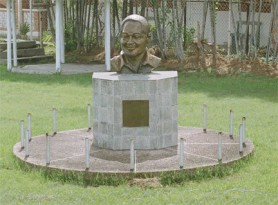
Some examples of this type are the Ann’s Grove and Two Friends Centenary Monument – a simple concrete and marble plinth – that commemorates the centenary of their purchase by free Africans on 5th May 1847; the Beterverwagting Emancipation Monument – a striking structure showing a hand with a broken chain, clutching a book, said to represent the registered title to the property in which the village was founded; the Golden Grove Centenary Monument commemorating the centenary of the purchase of the village in May 1948; the Lichfield Centenary Monument commemorating the centenary of the purchase of the village on 14th November 1840 and recording the names of the original proprietors and the Nabaclis 150th Anniversary Monument commemorating the 150th Anniversary of the purchase of the village on 25th May 1998.
The Friendship Emancipation Monument commemorates the centenary of Emancipation in 1838. The Kildonan Independence Monument commemorates national Independence on 26th May 1966 and records the names of village chairmen from 1925. The Plaisance Independence Monument, commemorates national Independence and also lists the original proprietors of the village and the Victoria Emancipation Monument, commemorates the 150th anniversary of Emancipation on 1st August 1988.
Monuments erected in homage to important personages are fewer but significantly, memorialise their outstanding stewardship and leadership. In some instances, the names of personages – village leaders – have been inscribed on monuments marking their accomplishments. There are several examples such as the Bagotville Memorial Monument honouring the memory of Jake Croker, a popular folklorist and nationalist; the Den Amstel Memorial Monument, erected to the memory of James McFarlane Corry who served as village Chairman for 27 years and is regarded as the ‘father’ of local government; the Forbes Burnham Mausoleum in the Botanical Gardens and the Forbes Burnham Memorial Monument, dedicated to the memory of the country’s first Prime Minister and ‘father’ of Independence and the Hubert Critchlow Monument which stands in the compound of the Parliament Building honouring the ‘father’ of the trade union movement.
Other events which have been memorialised are revolts prior to 1838. There are two main national monuments – the 1763 Monument honouring the heroes of the BerbiceRevolt in Berbice and the 1834 Monument honouring Damon, the leader of the Essequibo Revolt.
Examples of material culture are evident also in the economic sphere. Walter Rodney relates instances in which individual creole planters such as Alexander Ross of Pln Foulis, Cornelius Kryenhoff of Friendship and James James of Golden Grove actually acquired and operated small sugar mills which were supplied with canes from peasant farmers.
During the era of enslavement, sugar plantations required the labour of a large number of artisans – carpenters, coopers, sail-makers, smiths, wheelwrights and others. These skilled persons were able to transfer their talents to improving their own properties after Emancipation. They were able to manufacture carts, casks, vats and other materials needed for complex village life. Musical instruments such as banjos, drums, flutes and shak-shaks were hand-made.
Other crafts were ‘invented’ out of sheer necessity. Examples are the making of ceramic vessels and calabashes for storing beverages; the weaving of baskets and furniture from mukru, nibbi and tibisiri – skills likely borrowed from the indigenous Amerindians – and the making of kitchen utensils such as mortars, pestles and spatulas. As coastlanders ventured into the hinterland in their quest for new commodities such as balata, timber, gold and diamonds, sturdy riverboats had to be built. Forest industries produced charcoal, staves and shingles and woods for house-building and furniture-making.
A lively African-Guyanese press also blossomed, leaving bundles of useful research materials. Nigel Westmaas writes of newspapers – such as the Freeman’s Sentinel, Creole, Liberator, Working Man and Villager – which helped to inform the public and articulate the opinions of the community. Others followed their exemplary lead. Norman Cameron’s publication of The Evolution of the Negro was a landmark in African-Guyanese history; he authored also scores of other educational and literary works.
Creole cuisine, denoting meals belonging to, or typical of, African-Guyanese, is an enduring aspect of material culture. Those meals usually contain ingredients such as breadfruit, coconut, pigeon peas, plantains, root vegetables (cassava, eddo, tannia, yam, sweet potato etc.), salted meat (beef, fish, pork) and seasonings.
Congotay (from the Ga-Adanme Kokonte) is a porridge made from the flour obtained by pounding sun-dried slices of plantains or green bananas. Cook up (derived from the Hausa dafa duku = cook all) is an all-in-one meal including peas or beans and rice with fresh or salted meat and often boiled in coconut milk. Cou-Cou (derived, possibly, from the Twi nkuku) is a mixture of cornmeal, ochroes and butter boiled and stirred and shaped into a ball.
Fu-fu: (from the Twi fufu) is a food made by pounding boiled, green plantains into a dough-like mass and shaped into a ball. Kaanki (also called conkie), (from the Twi nkankye) is a sort of bread made from maize or cornmeal mixed with grated coconut, sugar and dried fruit, wrapped in quailed banana leaf and boiled. Metemgee (from the Twi metem = plantains or bananas; gye = to delight) is a meal prepared by boiling together various root vegetables with pieces of salted meat in coconut milk.
Creole cuisine is still very popular throughout the year but especially during the Christmas season.
The material culture of African-Guyanese is an area into which relatively little research has been done. It is clear from these examples, however, that from the time of the founding of the villages over 170 years ago, available materials have provided evidence of the founders’ resourcefulness and ingenuity in the task of constructing the first villages and in laying the foundation of the nation.

